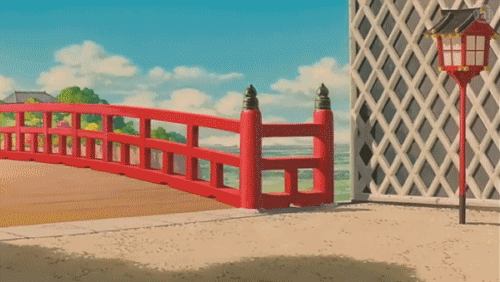For the longest time I couldn't make sense of this sequence. I felt it was significant somehow otherwise Miyazaki wouldn't have spent so many frames depicting it. I suspected that it eluded me because of some unspoken folk belief so inherent in Japanese culture it doesn't require explanation. Finally I stumbled upon a possible explanation in a book completely unrelated to anime/manga. In Karen A. Smyers The Fox and the Jewel: Shared and Private Meanings in Contemporary Japanese Inari Workship there is a brief description of a local folk practice that involves feeding foxes in order to curry their favor. The ritual involves placing offerings on small Inari shrines in the woods at night. Practitioners caution Smyers never to look backwards at any time during the ritual. When she asked why the practitioners explained that spirit foxes could possess her if she looked back, even if she didn't see or feel anything.
Spirit affliction and possession has
a long and deep history in Japan. The act of looking or seeing seems to
be a method by which the spirit can take hold of a human. Emphasis on
eyes and the power of the gaze abound in kaidan, tales of the strange
and supernatural that became popular during the Tokugawa era. The human gaze as catalyst for doom returns to the modern era in Ringu
and Ju-On. Once you have seen the accursed you cannot escape their
wrath.
Film
still. Ringu. 1998.
I used the print below in my Ghost
without a face presentation at Sakuracon 2013 because I found the depiction
extremely unusual. It depicts the unfortunate Oiwa from the Yotsuya Kaiden. Usually ghosts are shown without feet. But if you look closely you'll see one human foot and one spectral foot. Its a doppleganger
moment. Is she looking back and seeing her doom?
Oiwa jōchin. Utagawa Kuniyoshi (1797 - 1861). Ashmolean Museum.
Sources:
Smyers, Karen Ann. The Fox and the Jewel: Shared and Private Meanings in Contemporary Japanese Inari Worship. Honolulu: University of Hawaii Press, 1999. Print.



